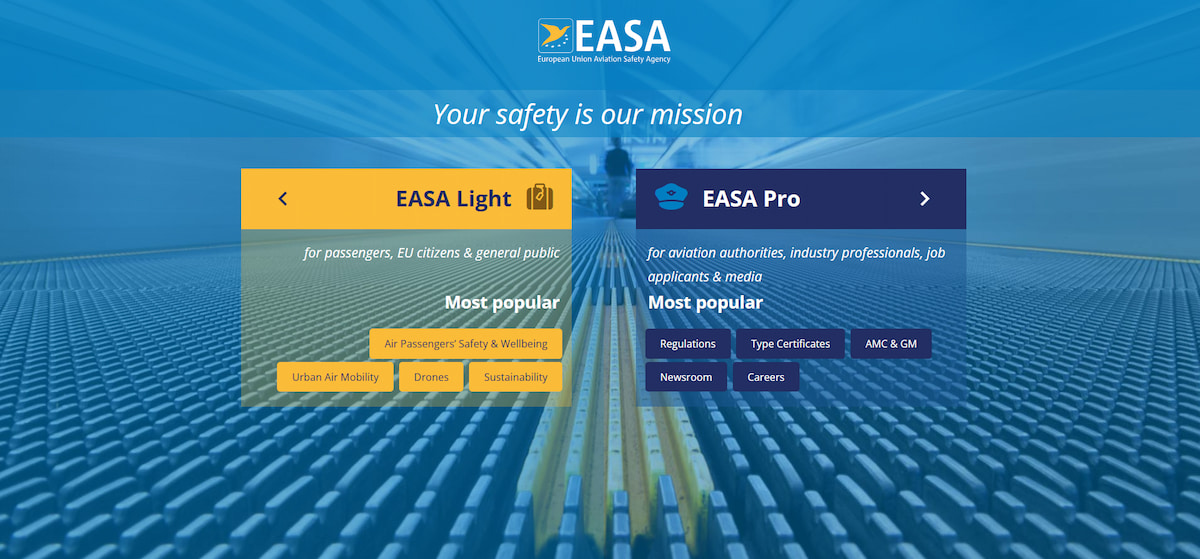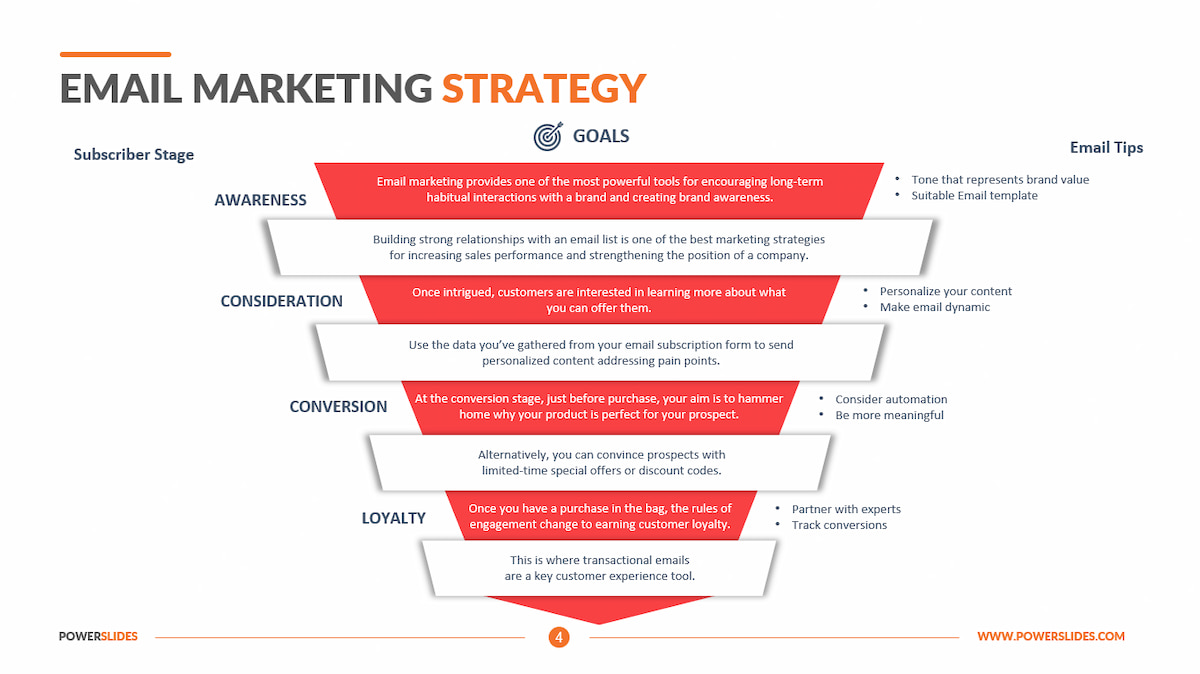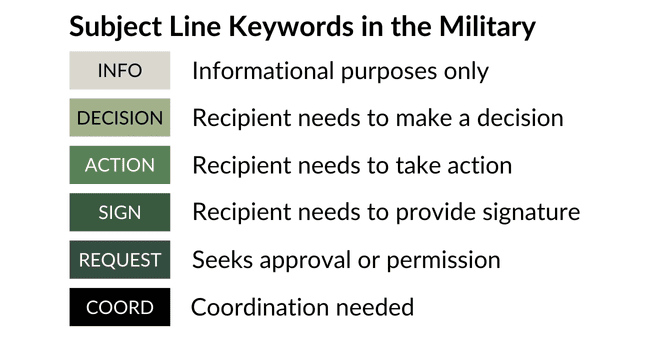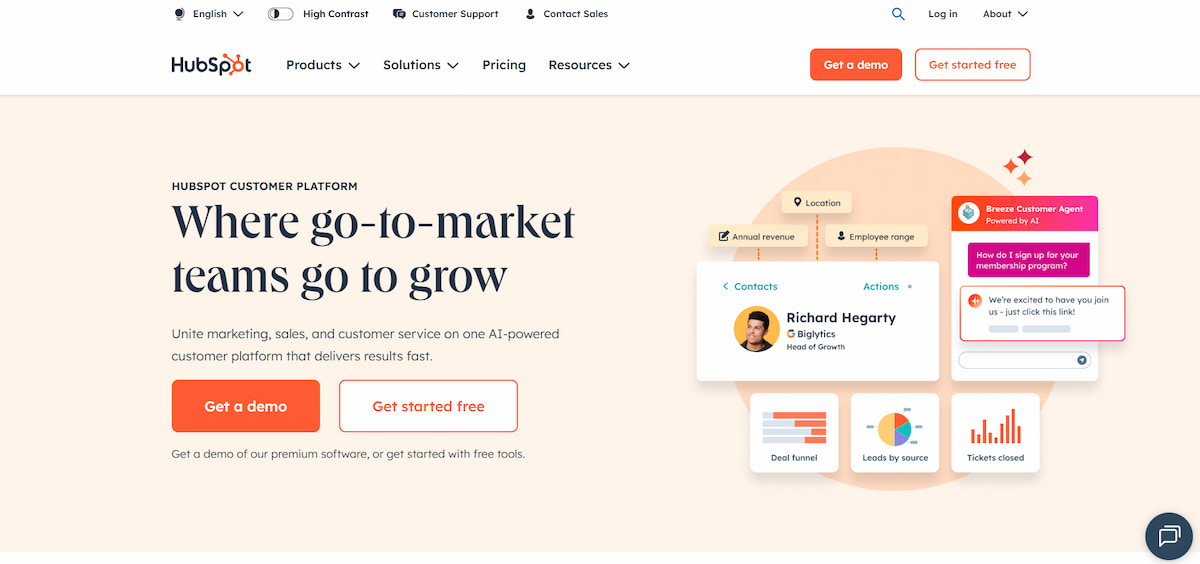Aerospace and defense industry email marketing isn’t about flashy promotions – it’s about delivering value, building trust, and staying top-of-mind during long decision cycles. By segmenting your audience, tailoring content, and automating follow-ups, you may convert prospects into long-term customers.
Want to enhance your aerospace and defense industry email marketing strategy? Implement these tactics and refine them based on your audience’s response.
Table of Contents
Segment Your Audience for Better Targeting
Engineers are digging into technical specifications, procurement teams are conducting cost studies, and program managers are managing deliverables. If you send them all the identical email, it may as well go straight to their trash folders.
Here’s why proper audience segmentation matters in aerospace and defense.
First, the long buying process means you need to provide the right information at each stage. Early research teams need educational content, while final decision-makers require specific solutions.
Second, major contracts depend on highly relevant messaging. Your content must address each recipient’s exact responsibilities and pain points.
Third, strict compliance regulations like ITAR and DFARS make careful segmentation essential – it’s not just good practice, but often a legal requirement.
The most successful marketers go beyond basic job titles. They segment contacts by:
- Specific technical skills;
- Security clearance levels;
- Current project needs.
For a deeper understanding of this approach, see what audience segmentation is and why it is important, which explains how breaking down audiences improves targeting and engagement.
This focused technique converts generic emails into meaningful interactions that advance possibilities. When your communication demonstrates that you understand someone’s specific function and challenges, they are much more inclined to engage.
Segment by Role & Seniority
Different roles care about different things. Engineers want technical specs and innovation updates. Costs, lead times, and compliance are given top priority by procurement teams. Executives prioritize risk management and return on investment. Government buyers need solutions that meet strict defense standards.
Tailor your content accordingly to increase engagement and deliver better results.
Segment by Industry Sub-Sector
Defense buyers want bomb-proof security. Airlines need fuel savings that pass FAA muster. Space companies require components that won’t fail in orbit. Speak to what actually matters to each segment.
Segment by Engagement Level
Leads at different stages need different content. New contacts benefit from educational whitepapers. Warm leads want case studies and demos. Existing clients appreciate updates on new features or exclusive offers.
This approach keeps prospects moving smoothly through the sales funnel.
Segment by Geographic Region
Regulations and priorities vary by location. U.S. buyers need ITAR compliance and “Buy American” details. European firms care about EASA rules and sustainability. Asia and the Middle East may require export control approvals.
Localized messaging ensures compliance and relevance.
Putting It Into Practice
- For procurement officers, highlight certifications and delivery speed;
- For engineers, focus on performance metrics and durability.
By segmenting effectively, you may transform generic outreach into targeted, high-impact communication.
Effective Personalization Strategies for Aerospace and Defense Industry Email Marketing
In aerospace and defense, emails need more personalization than just using someone’s name. Buyers expect content that matches their specific needs.
Make your emails more relevant by changing content based on what each contact does. If an engineer downloads a technical paper, send them related case studies next. When a procurement officer attends your webinar, follow up with the compliance docs they need.
Set up automated emails that respond to what prospects look at on your site. Someone viewing missile systems should get different content than someone researching aircraft parts.
For important clients, mention their actual projects in emails. Referencing a specific radar system RFP works better than general product info.
Pro Tip: Use CRM data to personalize subject lines like:
- “John, How [Company X] Reduced Aircraft Maintenance Costs by 30%”
- “Exclusive Invite: Defense Tech Webinar Tailored for Your Team”
Educate with High-Value Content
A&D professionals prioritize substance over sales language. To engage these buyers, focus on delivering practical, technical content that supports their decision-making process. Case studies with verifiable results prove your capabilities better than any sales claim. Technical whitepapers provide the depth that engineers and procurement teams require for proper evaluation.
Webinars on UAV tech highlight expertise. Defense spending reports guide decisions. ITAR/FAA updates are essential, not optional.
This content approach establishes credibility by addressing actual needs rather than pushing products. When you provide genuinely useful information, you position your solutions as the natural choice without resorting to hard sales tactics. The most effective A&D marketing educates first and sells second.
Example email flow:
- Lead Magnet Email: “Download Our Guide to Next-Gen Avionics Compliance”
- Follow-Up: “3 Ways Our Avionics Solutions Cut Costs (Case Study Inside)”
- Nurture Email: “Join Our Expert Panel on FAA Regulation Changes”
Use Security-First Messaging
In aerospace and defense, security requirements are mandatory, not optional. When dealing with sensitive projects and technical specifications, your email communications must reflect the same level of security awareness that your clients maintain.
Clients aren’t just reviewing your product capabilities – they’re verifying your ability to properly handle their most sensitive programs and information. Your email practices serve as proof of your security competence.
Compliance as a Competitive Advantage
Rather than treating security standards as burdensome requirements, position them as proof of your reliability. Highlight your adherence to:
- ITAR for handling export-controlled technical data;
- DFARS cybersecurity protocols;
- NIST SP 800-171 for sensitive unclassified information;
- CMMC certification where applicable.
Secure Document Handling Protocols
All technical documents must follow strict security protocols. Encrypt PDFs with AES-256 to prevent unauthorized access. For highly sensitive files, use two-factor authentication to verify recipients before sharing.
Passwords require separate transmission through secure channels such as SMS or encrypted messaging platforms. Never email passwords with the protected documents. Standard consumer file-sharing services are unacceptable for professional use. Approved enterprise platforms must provide: detailed access tracking, configurable link expiration settings, and granular permission management.
These protocols ensure proper protection of sensitive materials throughout all business communications and transactions. Compliance is mandatory for all document exchanges involving technical data or proprietary information.
Operational Security Best Practices
All project-related emails must adhere to strict security protocols. Never include classified or proprietary program details, whether directly or indirectly. Avoid specifying technical parameters or performance characteristics that could potentially expose sensitive information to unauthorized individuals.
Apply the need-to-know concept to every correspondence. Distribute information only to pre-approved recipients who have a documented need for access as part of their official duties. Implement established processes for Controlled Unclassified Information (CUI), such as accurate document classification markings and safe storage standards.
These security measures ensure proper protection of sensitive materials while maintaining effective business communications. Compliance with these practices is mandatory for all personnel handling protected information.
Effective Security-First Subject Lines
Craft subject lines that immediately communicate your security awareness:
- “ITAR-Compliant Technical Data Package Available Through Secure Portal”
- “DFARS-Aligned Cybersecurity Solutions for Your Defense Program”
- “Secure Briefing: NIST 800-171 Compliant System Architecture”
Your email security practices should:
- Mirror the protocols your clients follow internally;
- Demonstrate understanding of classified information handling;
- Show consistency with government security requirements;
- Provide clear, secure pathways for further discussion of sensitive topics.
Prioritizing security in all communications establishes your company as a reliable partner for critical programs and ensures proper protection of sensitive data for both your organization and your clients.
Make Sure Your Emails Work on Mobile and Dark Mode
Many A&D professionals check emails on-the-go, often on secure mobile devices. If your email isn’t mobile-friendly, you risk losing engagement.
Mobile optimization tips:
- Single-column layouts for easy scrolling;
- Large, clear CTAs (buttons, not hyperlinks);
- Dark mode compatibility (many government/military devices use it);
- Short, scannable copy with bullet points.
Use Automated Drip Campaigns to Nurture A&D Leads
In aerospace and defense, sales move slowly. We’re talking 6-18 months for most deals, sometimes longer for big contracts. Your buyers aren’t making quick decisions. They’re researching, comparing options, and jumping through procurement hoops.
Trying to handle all of those follow-ups manually? That is a formula for dropped balls and squandered opportunities.
That’s where automated drip campaigns come in. Set them up once, and they’ll keep your prospects engaged through the entire buying process – without your sales team having to micromanage every touchpoint.
First Impression (Welcome Email)
Start simple. Introduce your company and highlight what makes you different – your certifications, specialized expertise, or unique tech.
Example subject line: “How [Your Company] Helps Defense Contractors Meet ITAR Requirements”
Show Your Knowledge (Educational Content)
Next, send something genuinely useful – an industry report, technical guide, or webinar invite that solves a real problem.
Example subject line: “New Research: Avionics Trends for Military Aircraft”
Prove It Works (Case Study)
Hit them with outcomes now. Give a concrete example of how you have aided comparable businesses in meeting deadlines, increasing performance, or saving money.
Example subject line: “How [Client] Cut UAV Deployment Time by 30%”
Get Personal (Follow-Up)
When they engage with your content, reach out personally. Offer to dive deeper into their specific needs.
Example email: “I noticed you downloaded our avionics report – would a quick demo help with your current project?”
Bring Back the Quiet Ones (Re-Engagement)
For leads that go cold? Try sharing something new and valuable to restart the conversation.
Example subject line: “Important: How New FAA Rules Affect Your Operations”
Recommended Automation Tools
Most email marketing chores may be automated using tools like as HubSpot, Marketo, and Pardot. Here’s what they do well.
- They send targeted content based on user actions – for example, automatically following up a whitepaper download with a related case study;
- They score leads to show you which prospects are most engaged;
- They sync with your CRM to log every interaction in one place.
Let’s be real – when deals take forever to materialize, you can’t have your sales team manually following up for months. These tools do the heavy lifting, keeping you top-of-mind until they’re ready to buy.
Data-Driven Email Optimization
Tracking email performance is critical; without it, you cannot quantify success or improve your strategy. Focus on four key metrics: open rates (20-30%), click-through rates (2-5%), conversion rates (leads to meetings/demo), and unsubscribe rates (large numbers suggest misaligned content).
A/B testing can help you optimize your strategy. Test technical vs. benefit-driven subject lines, send timings (government audiences engage early), and CTA placement (top vs. bottom).
Conclusion
Aerospace and defense industry email marketing relies on accuracy, compliance, and trust. Unlike broad consumer campaigns, it requires secure and relevant content that addresses the needs of engineers, procurement teams, and decision-makers.
Smart segmentation, data-driven customisation, and strategic automation are critical for guiding prospects through extended decision cycles. Always emphasize security and follow stringent regulatory rules in all messages.
To maximize results, regularly monitor campaign performance and adjust your strategy as needed. This ensures your messaging stays relevant and meets client expectations. When executed properly, aerospace and defense industry email marketing becomes a valuable asset for building stronger client relationships, producing qualified leads, and achieving success in this strictly regulated industry.



